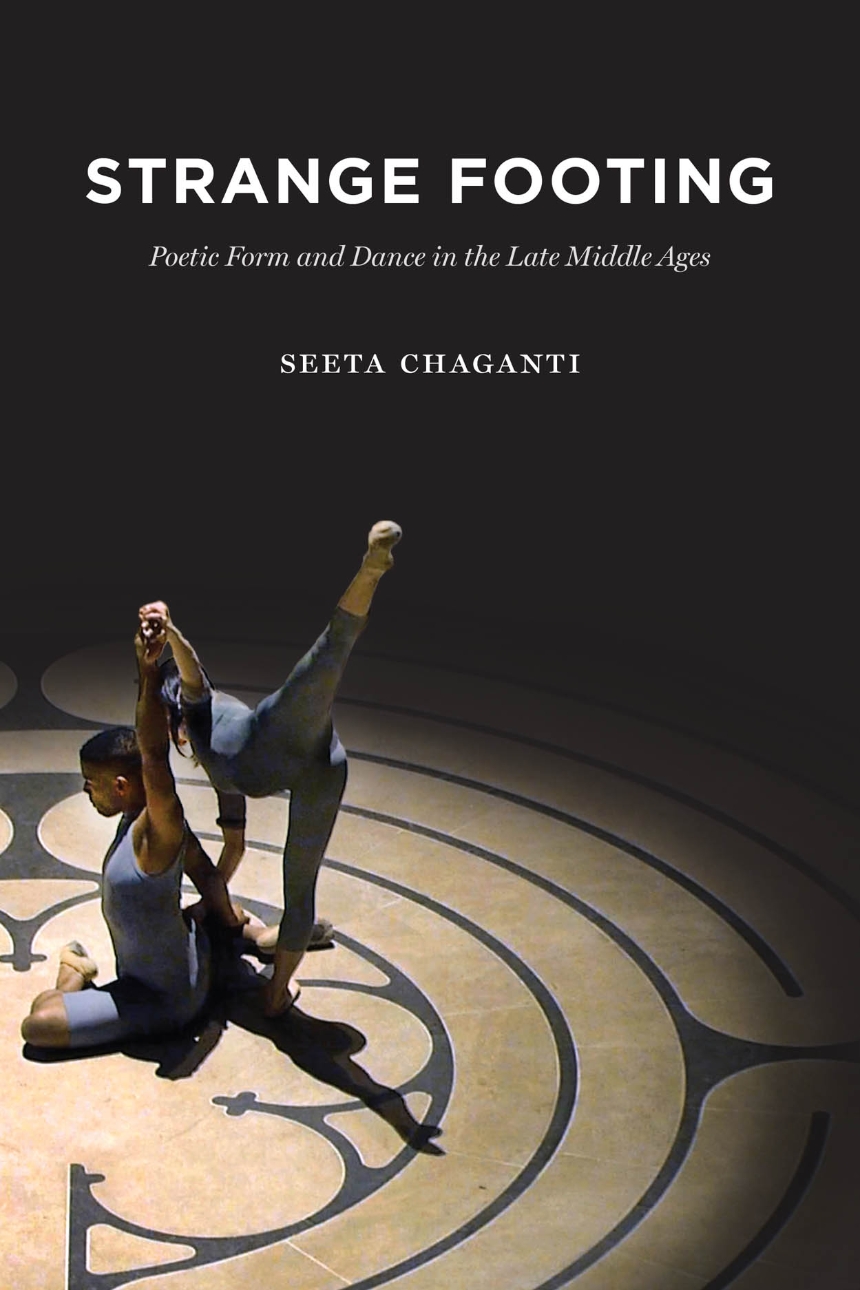Strange Footing
Poetic Form and Dance in the Late Middle Ages
Strange Footing
Poetic Form and Dance in the Late Middle Ages
Exploring the complex relationship between medieval dance and medieval poetry, Strange Footing argues that the intersection of texts and dance produced an experience of poetic form based in disorientation, asymmetry, and even misstep. Medieval dance guided audiences to approach poetry not in terms of the body’s regular marking of time and space, but rather in the irregular and surprising forces of virtual motion around, ahead of, and behind the dancing body. Reading medieval poems through artworks, paintings, and sculptures depicting dance, Seeta Chaganti illuminates texts that have long eluded our full understanding, inviting us to inhabit their strange footings askew of conventional space and time.
Strange Footing deploys the motion of dance to change how we read medieval poetry, generating a new theory of poetic form for medieval studies and beyond.
Read chapter three: "A Certain Slant of Light": Reenacting Danse macabre as Dance.
304 pages | 10 color plates, 25 halftones | 6 x 9 | © 2018
Literature and Literary Criticism: British and Irish Literature, Romance Languages
Music: General Music
Reviews
Table of Contents
List of Illustrations
Introduction
Part One
1. “Vanysshed Was this Daunce”: Reenactment, Experience, Virtuality
2. Bonaventure and a Strumpet: A Theory of Medieval Poetic Form
Part Two
3. “A Certain Slant of Light”: Reenacting Danse macabre as Dance
4. “Dredful Fotyng”: Reenacting Danse macabre’s Poetic Form
Part Three
5. The Carole’s Virtual Circles
6. Dance on the Surface, Dance in the Depths: Reenacting Form in the Middle English Carol
Conclusion: Dance in the Margins, Dance in the Center
Acknowledgments
Index
Awards
Modern Language Association: MLA Scaglione Prize for Comparative Literary Studies
Won
